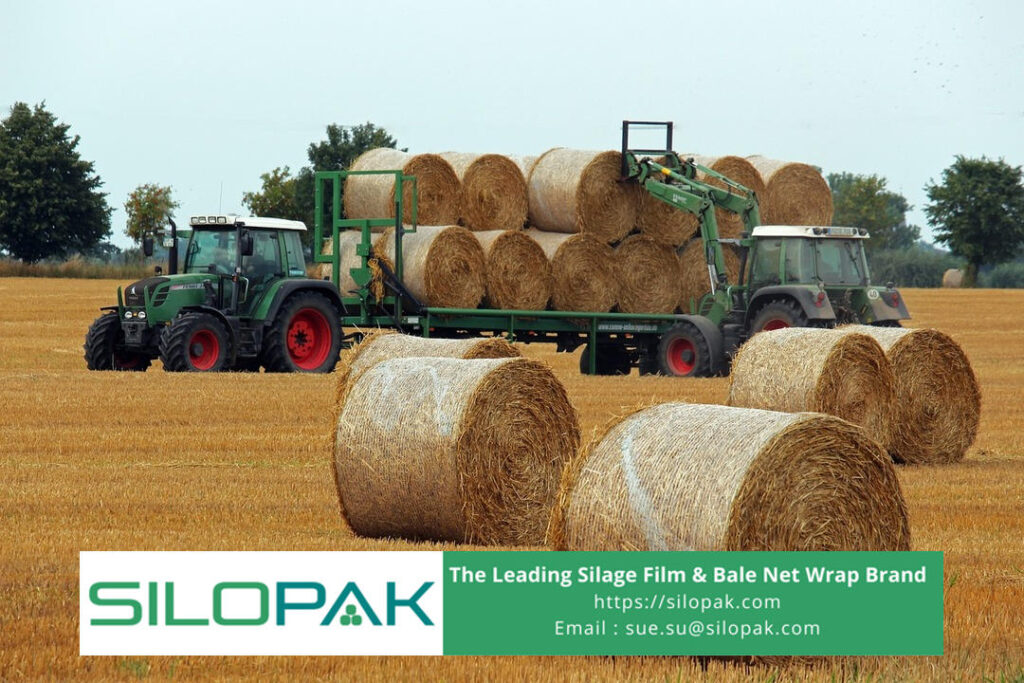
Baled silage or commonly abbreviated as baleage is one of the popular methods used in the world of agriculture and animal husbandry in terms of producing feed efficiently. So that the forage remains of high quality and healthy, one of the most influential factors is baleage moisture. So, how can baleage humidity levels affect feed quality?
contents
Effect of Baleage Moisture on Feed Quality
As with making silage in general, the baleage method is carried out by fermenting or preserving forage in large bales. The difference is, this method is guaranteed to produce fresh and quality forage only if it uses a much higher humidity level than dry straw.
The baleage method has been proven superior and has many advantages over other feed storage methods. But on the other hand, it can also be very challenging from a production and health standpoint especially if the humidity is not properly measured. The question is, what is the right bale moisture size?
The Ideal Humidity and Moisture Content in the Bale
Regulating humidity levels by monitoring moisture content in the bales precisely is essential to reduce the risk of damage and produce optimum quality feed. The correct measurement of the moisture content can guarantee that the fermentation will take place perfectly, right after the bales are wrapped and anaerobic conditions occur, aka vacuum by completely removing oxygen from the bales.
Based on research, the proper and ideal baleage humidity for optimal fermentation results is between 45-60 percent.
The percentage of moisture that is slightly below or above the ideal amount still allows fermentation to occur, but of course with less than optimal results. However, excess moisture is not recommended at all. Here’s a detailed description.
- At a humidity level of less than 45 percent, mold growth will still occur because anaerobic conditions are not created. This will make the fermented feed less fresh and not last long.
- At high humidity levels between 60-70 percent, mold, and bacteria will develop more quickly, thus accelerating decay. The taste of the feed becomes less tasty and not fresh.
- At very high humidity levels above 70 percent, the baleage method is not recommended because fermentation can easily fail due to too-wet environmental conditions. Forages need to wait to dry before being processed with baleage.
Tips on Retaining Moisture on Feed Quality
During the baleage manufacturing process, maintaining moisture in the bale can be just as important as paying attention to humidity levels. To retain moisture, you will need to use additional bale wrap. There are specific tips to improve feed quality through this technique. What should be done?
- Use high-quality bale wrap and bale film from a reliable supplier or manufacturer.
- Make sure the wrap has high UV resistance to prevent damage from excess sun exposure.
- Ensure the wrapper is made of a polyethylene-based plastic polymer to make it stronger.
- Make sure the wrap has high elasticity or can stretch about 50-70 percent of its initial shape when applied to the bale.
- At an ideal humidity level of 45-60 percent, wrap the bale with at least 6-8 layers of film each 1 mil thick.
- At humidity levels less than 45 percent, apply an additional 2 layers of 2mil thick bale wrap.
- At high humidity levels between 60-70 percent, the bale wrap should be at least 2 mils thick.
- Make sure that the plastic bale wrap is placed in a safe place so that it is not damaged, torn, and filled with holes by carrying out routine monitoring.
Health Risk Due to Incorrect Baleage Moisture
Wrong and imperfect humidity levels in the baleage fermentation process not only damage the quality of the feed in terms of its physical form and nutritional content, but can also have a high risk of encouraging the growth of harmful organisms that affect the health of the livestock that consume the feed.
The two most common diseases found in livestock due to the growth of bacteria and fungi during the imperfect fermentation process are Botulism and Listeriosis (circling disease). Botulism is a disease caused by a toxin produced by a fungus called Clostridium botulinum, while Listeriosis is caused by the bacterium Listeria monocytogenes. Both cause paralysis, organ complications, and even livestock death.
Correct Ways to Handle Baleage
The baleage method must be carried out with the correct technique so that the feed quality is optimal. Apart from monitoring water levels, there are at least 4 things that also need attention.
Harvest Time
The baleage method is particularly effective on grasses, legumes, and small grains. Even so, choosing it cannot be arbitrary. For quality fodder, it is advisable to choose forages and seeds that are just growing at an early stage. This is because the more mature the forage, the lower its nutritional value will be. What’s more, more mature forages usually have lower sugar levels and are less perfect for the fermentation process.
Packaging Technique
Not only does it wrap tightly using multiple layers, but it wraps quickly. Immediately wrap the bale as soon as possible once the forage is added so that the internal temperature of the bale is maintained, and creates anaerobic conditions that will help the fermentation process. Also, pay attention to the right number of layers of wrapping to start the fermentation process quickly.
Density
One study showed that a bale wrapped with at least 6-8 layers of 1 mil wrap could guarantee the ideal internal bale temperature and baleage moisture, while completely removing oxygen from the bale in just 4 hours after wrapping. When the bales were opened after 1 month, the forage samples showed that their nutritional value was still as high as before.
